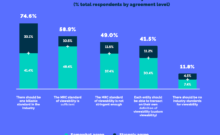Mobile ad fraud is in the midst of a period of rampant innovation.
That was the takeaway of a recent report from app marketing firm Adjust, which found that the rate of fake app-installs, clicks, attributions and other mobile scams doubled in the past year alone. The company said around 7.3 percent of the 3.4 billion app-installs and 350 billion interactions it monitored in the first quarter of the year showed evidence of fraud.
Adjust’s ad fraud specialist, Andreas Naumann, said the spike was the result of bad actors creating new ways of tricking marketers, giving those fraudsters a leg up in the constant cat-and-mouse fight.
“2017 was the year of innovation and evolution for fraudsters,” Naumann said. “A lot has happened.”
Much of that innovation involves a method of faking app installs called SDK spoofing, in which hackers are able to make it appear as if a download has taken place by breaking into the communication line between developer-side analytics tools and back-end servers. This type of fraud is harder to spot than conventional methods of faking installs because it traces back to real users rather than imaginary ones.
Adjust says SDK spoofing made up about 37 percent of the fraud it found, while click injection accounted for 27 percent, other fake installs 20 percent and click spam 16 percent. In some cases, SDK spoofing ate up as much as 80 percent of a single campaign’s budget. The app categories hardest hit by SDK spoofing are gaming (29 percent), ecommerce (27 percent) and food and drink (17 percent).
Read More At The Original Article: www.adweek.com









